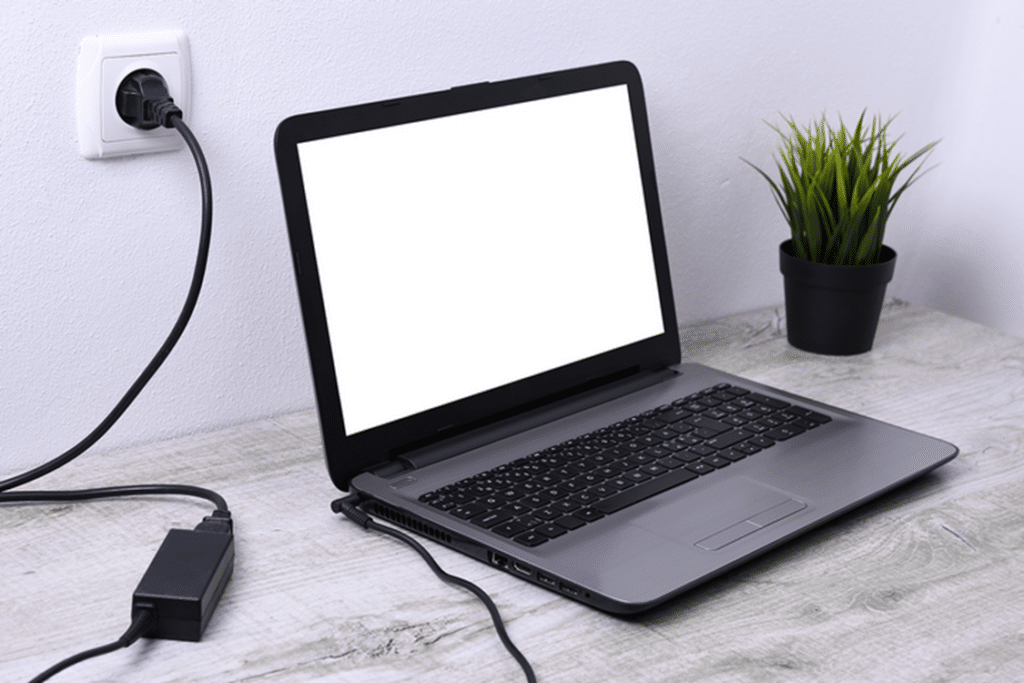Table of Contents
Voltage fluctuations occur when too much or too little electricity circulates through a distribution system. If you’ve seen your lights flicker, it is a sign of this phenomenon. Nearby lightning strikes, power line damage, or equipment failure can cause power fluctuations.
Power fluctuations may only last a brief moment in duration. Yet, they send a blast of volts through electrical wires, disrupting any delicate electronics plugged into the wall. That includes your laptop. The average laptop uses only 120V, but a fluctuation may send significantly more power to your device. As a result, it will fry and damage your laptop. Most of the time, you may not be able to use your machine afterwards.
Fortunately, you can take measures to avoid the damage a power surge can bring. Learn how to protect your laptop from power fluctuations
Use a surge protector at all times
A surge protector is not a power strip. A surge protector is a multi-outlet device designed to absorb power surges and protect electronics like your laptop from fluctuations. A surge protector can block additional and short voltages, minimizing the risk of damage to your device. Instead of plugging into the wall, you plug your laptop into the surge protector to maximize protection.
A surge protector can wear out, and a malfunctioning surge protector may not be able to counteract a power fluctuation. If there are any signs of issues, buy a new surge protector. They are relatively inexpensive and will work wonders at protecting your laptop. Power spikes happen frequently. Many of them we don’t notice. They can have a cumulative effect, slowly damaging a surge protector. A new surge protector is your best solution.
Unplug your laptop when not in use
You aren’t always going to be near a surge protector. The best way to safeguard your laptop from power fluctuations is to deny access to the wire. Unplug your laptop when it’s not in use. This way, the excess power will never reach your device during a fluctuation. The same goes for any costly electronics plugged into the wall, especially if you know a thunderstorm or lightning storm is on the way.
Invest in a laptop warranty
Your laptop may have a warranty plan, such as the ASUS Accidental Damage Protection (ADP). This program is a smart move to cover any damages you may experience from power fluctuations. The plan may cover circumstances like an electrical surge from storms. In addition, it may provide coverage for a cracked screen or an accidental liquid spill.
ASUS Accidental Damage Protection is available for various product lines. You can apply it for ASUS Zenbook laptops, Vivobooks, Chromebooks, Expertbooks, or ProArt StudioBooks. In addition, ASUS ROG gaming laptops and TUF gaming laptops are eligible under this program. These laptop protection plans provide the peace of mind since you’re covered if the worst-case scenario happens.
Don’t overload a circuit
When you plug too many devices into a single circuit, it requires a significant electrical supply. This excessive demand may lead to intermittent power failures and wide variations in available electricity. You also run a fire hazard risk. Be careful with high-electricity products, such as laptops, servers, and network devices, all plugged into the same circuit. It is a common issue in homes with desktop computers and other bulky electronics fed into the same outlet.
Check your electrical wiring
Check for faulty or substandard wiring in your home. Have an electrician come by and inspect your wiring. Faulty wiring can worsen surge problems and carries a higher risk of a surge hitting your laptop. This precautionary step minimizes the risk if something like a surge protector fails.
Replace a damaged battery
If your laptop does become a victim of a power fluctuation without any protection, the effects are often long-lasting. When a power fluctuation reaches their laptop, the battery becomes damaged. The battery either won’t be able to hold a charge, or it will run down faster.
Although the battery may be damaged, the laptop should still work plugged into an electrical outlet. Until you replace a damaged battery, there is no fixing a battery damaged in this way. You will have to rely on another power source for your device.
Replace a damaged laptop
You may also see your operating system operating sluggish. It means the power fluctuation reached your hard drive and has potentially permanently altered the OS performance. Likewise, your system may shut down and no longer boot up. If this happens, it could be because your motherboard was affected.
Suppose your laptop was rebooted or shut down because of a power fluctuation. In that case, this could leave processes partially finished, files and threads corrupted, and corrupted system files the operating system relies on to function. You can reboot and reload the operating system as a last-ditch effort to get it working again.
If your laptop is going through serious trouble, consult a repair technician. Have them run diagnostics to identify the solution for your broken laptop. Without a warranty, these laptop repairs may get very expensive. That’s why the ASUS Accidental Damage Protection program can be so valuable for laptop users.
